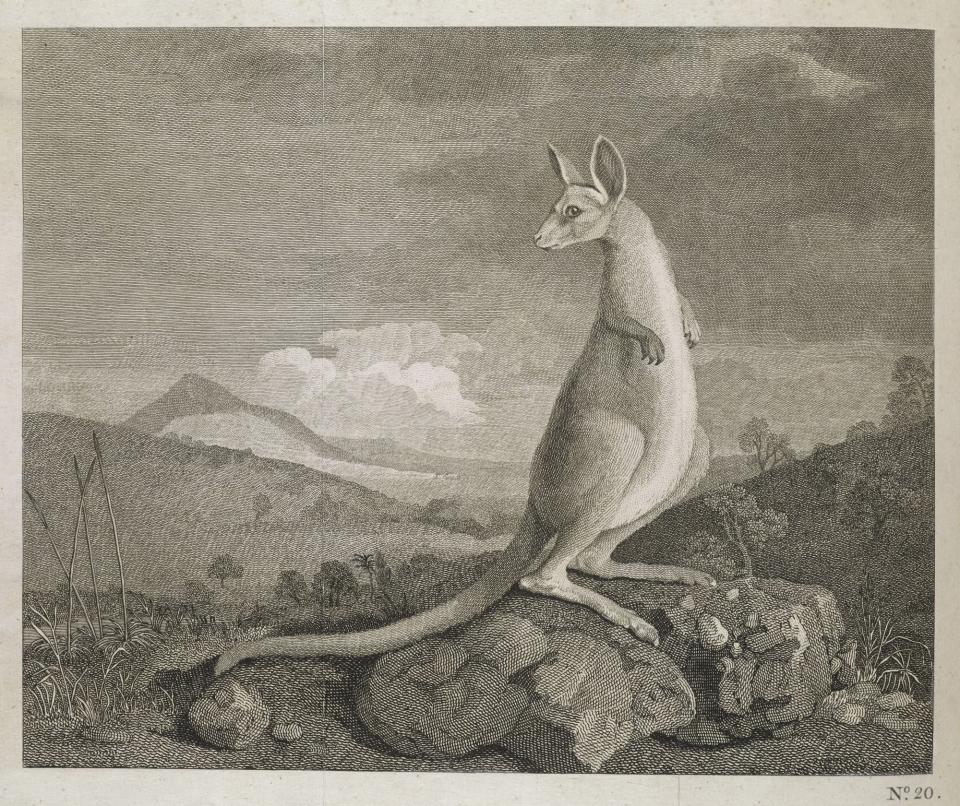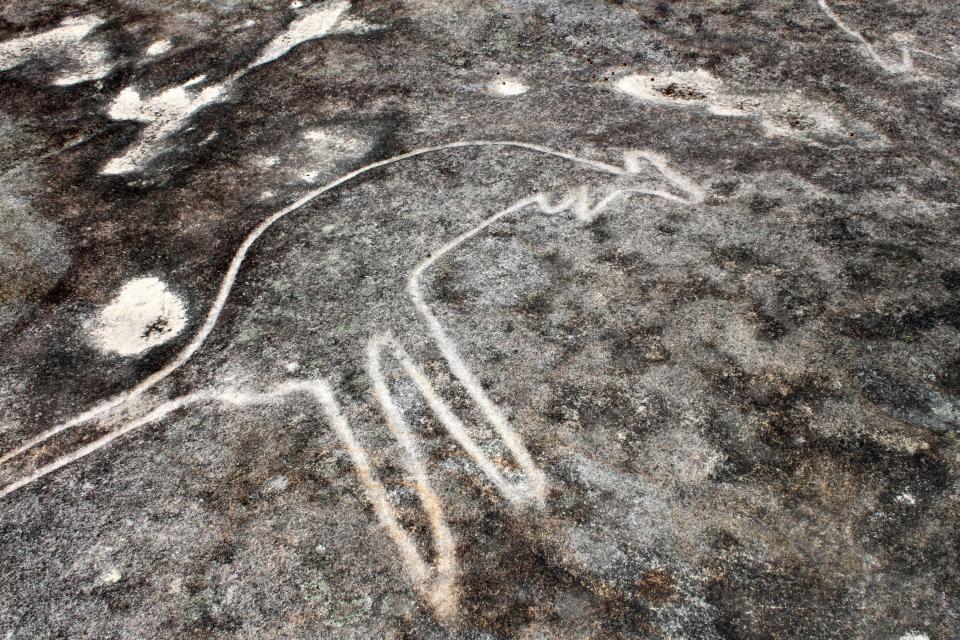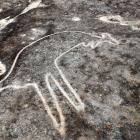In January 2020, Queensland-based photographer Brad Fleet shared an image on Instagram of a dead joey, or young kangaroo, trapped on a barbed wire fence and carbonized by the flames of the Cuddle Creek fire in Adelaide Hills, South Australia. The photograph went viral, becoming an icon of the ravages of the bushfires of 2019–2020, which killed some three billion animals. And yet, kangaroo species such as the one captured by Fleet were conspicuously absent from the list of critically threatened native species published by the Bushfire Recovery Expert Panel in September 2020. Two months prior, aerial population surveys had resumed across various states to determine kangaroo-culling zones and quotas for ensuing years.
In the wake of the “Black Summer,” arguments for and against kangaroo culling were voiced by numerous members of the Australian government, animal welfare organizations, environmental scientists, and the general public. In the process, historical debates have been reignited surrounding the management of kangaroos—a native species classified as an overabundant “pest” since the early days of settler-colonization, that occupies an ambiguous position within Australian social, ecological, and economic imaginaries, and whose institutionalized culling stands in tension with the valorization of Indigenous species within Australian environmental policy and public discourse.

Fig. 1. “An Animal Found on the Coast of New Holland Called Kangaroo.” 1773. Etching by George Stubbs. Published in London by W. Strahan and T. Cadell. British Library, Shelf 455.a.21-23.
Fig. 1. “An Animal Found on the Coast of New Holland Called Kangaroo.” 1773. Etching by George Stubbs. Published in London by W. Strahan and T. Cadell. British Library, Shelf 455.a.21-23.
Click here to view the source.
 This work is licensed under a Creative Commons Public Domain Mark 1.0 License.
This work is licensed under a Creative Commons Public Domain Mark 1.0 License.
Two and a half centuries prior to Fleet’s Instagram post, the European world was introduced to kangaroos in the form of an engraving by English painter George Stubbs, published in the 1773 account of James Cook’s HMS Endeavour voyage (Figure 1). The curiosity of European intellectuals was sparked by this hopping, pouch-bearing creature that challenged extant species taxonomies and embodied the strangeness of the antipodean world. The positioning of kangaroos as popular targets for recreational hunting among early settlers, meanwhile, conjured colonial hierarchies wherein animals constituted passive, inferior objects of human exploitation. This contrasted starkly with Indigenous understandings of kangaroos as revered native kin, ancestral spirits, and sources of food, sustained through intergenerationally transmitted practices of landscape management, including selective burning and clearing.
After the introduction of domesticated livestock, the conversion of putatively wild forests into civilized pastures, and the decline in some native predators prompted by European land-management practices, kangaroos’ abundance was reframed as a threat to the agricultural economy that sustained the allegedly superior, livestock-based diets of settler populations. The 1879 Marsupials Destruction Bill and the Pastures and Stock Protection Act of 1880 formalized kangaroos’ status as vermin and pest, which in turn concretized their demonization under colonial logic as impediments to economic progress and therefore as legitimate objects of eradication. Twenty-one million kangaroos were slaughtered between 1881 and 1900 in New South Wales alone, with other states adopting similar population-control measures. Today, kangaroo population-control measures continue in the form of regular, state-sanctioned culling of Australia’s three most abundant macropod species—the red kangaroo, western gray kangaroo, and eastern gray kangaroo, whose total population is estimated at 45 million (Figure 2)—under hunting quotas set by aerial population surveys at the state level. Historically and in the present, Indigenous peoples have little or no say in these and many other decisions pertaining to the management of native wildlife with whom they had shared Country since time immemorial—even as kangaroos have long held central significance in Aboriginal philosophies, cosmologies, foodways, and art (Figure 3) and even as kangaroo populations have been sustained by millennia of Aboriginal hunting practices.

Fig. 2. A mob of eastern gray kangaroos on the Square Rock Walking Track in Namadgi National Park, Australian Capital Territory.
Fig. 2. A mob of eastern gray kangaroos on the Square Rock Walking Track in Namadgi National Park, Australian Capital Territory.
Accessed via Flickr.
 This work is licensed under a Creative Commons Attribution 2.0 Generic License.
This work is licensed under a Creative Commons Attribution 2.0 Generic License.
Following the Black Summer, debates surrounding what Peter Singer has termed the “largest commercial slaughter of terrestrial wildlife anywhere in the world” have rekindled, amplifying preexisting controversies over the ethical, economic, and environmental dimensions of human-wildlife relations in Australia. Climate change, together with unprecedented biodiversity loss in a country that bears the dubious title of “global leader in wildlife extinctions,” has now compounded these debates by adding additional layers of contention and concern. Some advocates frame culling as an altruistic means of sparing kangaroos death from starvation and dehydration amid increasingly frequent and protracted fires and droughts, in ways that are redolent of colonial paternalism and the attendant salvation complex. Other advocates affirm that climate change itself is the unaddressed problem—one that is symptomatic of the extractive paradigm of colonial capitalism framing nature as a passive resource for human exploitation.

Fig. 3. Aboriginal Australian kangaroo engraving near Bundeena, New South Wales.
Fig. 3. Aboriginal Australian kangaroo engraving near Bundeena, New South Wales.
Accessed via Flickr.
 This work is licensed under a Creative Commons Attribution 2.0 Generic License.
This work is licensed under a Creative Commons Attribution 2.0 Generic License.
In this and other respects, the kangaroo-culling debate, while set against the seemingly novel backdrop of climate change and postcolonialism, remains in many ways firmly embedded within what historian of Australia Cameron Muir, following Alfred Crosby, terms “ecological imperialism”—a process and paradigm anchored in the instrumental commodification of nature, the dichotomization and hierarchization of environment and society, and the willful pathologization and neglect of the Australian landscape and its native human and other-than-human inhabitants.
In 2021, an official inquiry by the state of New South Wales set an important institutional precedent in recognizing the severe impediments posed to the health and well-being of kangaroos under extant management practices. Absent from this report, however, was any sustained acknowledgment of, or engagement with, the legacies of settler-colonialism on the socioenvironmental landscapes that these impediments are embedded within. In this, we would do well to think with Aboriginal educator Aunty Ro Mudyin Godwin’s response to the inquiry’s Committee—that “[i]t is colonialism that sees country as only something to gain a financial profit from—to be used, to be abused—and that sees kangaroos as a pest.”
How to cite
Chao, Sophie. “The Colonial Roots of the Kangaroo Controversy.” Environment & Society Portal, Arcadia (Spring 2023), no. 7. Rachel Carson Center for Environment and Society. doi:10.5282/rcc/9608.
ISSN 2199-3408
Environment & Society Portal, Arcadia
 This work is licensed under a Creative Commons Attribution 4.0 International License.
This work is licensed under a Creative Commons Attribution 4.0 International License.
2023 Sophie Chao
This refers only to the text and does not include any image rights.
Please click on an image to view its individual rights status.
- Chao, Sophie. “Bouncing Back? Kangaroo-Human Resistance in Contemporary Australia.” Environment and Planning E: Nature and Space 6, no. 1 (2023): 331–54. doi:10.1177/25148486221084194.
- Chao, Sophie. “The Palate Politics of Eating Kangaroo.” Edge Effects, Unpure Imagination series, 28 April 2022. https://edgeeffects.net/kangatarianism/.
- Crosby, Alfred W. Ecological Imperialism: The Biological Expansion of Europe, 900–1900. 2nd ed. Cambridge: Cambridge University Press, 2004.
- Foley, Mike. “Why Is Australia a Global Leader in Wildlife Extinctions?” The Sydney Morning Herald, 20 July 2020. https://www.smh.com.au/politics/federal/why-is-australia-a-global-leader-in-wildlife-extinctions-20200717-p55cyd.html.
- Legislative Council of New South Wales. Health and Wellbeing of Kangaroos and Other Macropods in New South Wales. Report 11. October 2021. https://www.parliament.nsw.gov.au/lcdocs/inquiries/2707/Report%20No%2011%20-%20PC7%20-%20Health%20and%20wellbeing%20of%20kangaroos%20and%20other%20macropods%20in%20NSW.pdf.
- Muir, Cameron. The Broken Promise of Agricultural Progress: An Environmental History. New York: Routledge, 2014.
- Singer, Peter. “The Nation of Kangaroos.” Project Syndicate, 13 March 2018. https://www.project-syndicate.org/commentary/kangaroo-killing-in-australia-by-peter-singer-2018-03.








